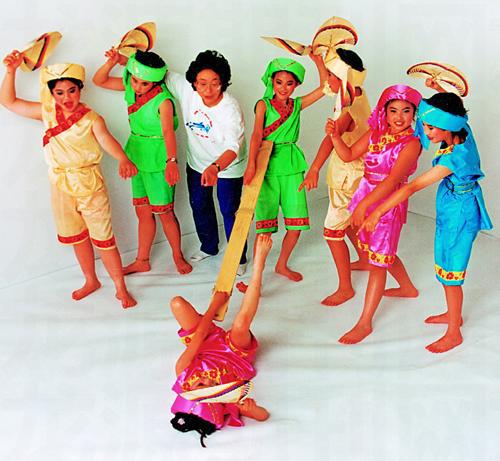Best Dance Starts in Golden Years
2009-06-08ByPanJie
By Pan Jie


The 73-year-old Shen Bei has been working as a preeminent dance teacher and choreographer in Minnesota, USA since 1993.
A long time ago, her family in rural Tongxiang, Zhejiang ran a small blacksmith workshop that made farming tools and household utensils. The high quality products made a family fortune and the fortune turned the family into scholars. Her great grandfather was a mathematician in the Qing Dynasty and her grandfather was one of Chinas first students sent overseas, who later acquired PhD degrees in Belgium and France. A PhD from the MIT, USA, her father died in his 30s while working as the director of a railway construction bureau in World War II in charge of building a railroad from Yunnan to Burma. Her mother was a graduate from Nanjing Normal College and worked as a primary school principal.
Shen Bei was an intelligent girl. After the founding of the Peoples Republic in 1949, she joined an entertainment troupe operated by the Youth League. She soon became a very good actress. But her promising dancing career became uncertain when her mother and her brother became victims in a political movement in 1957 and she had to leave Shanghai. Fortunately, Zhejiang Song and Dance Ensemble signed her and her husband up. So she came to Hangzhou. Pretty soon, she became a choreographer herself. “Tea-leave Picking”, a dance choreographed jointly by Shen Bei, made Zhejiang famous across the country.After the Cultural Revolution (1966-1976), she resumed choreography and won many awards for her excellence in choreography. She also wrote and published some research papers on dancing.
She retired from the ensemble in 1993. She had slightest idea that she would start choreographing again when she and her husband arrived in New York to take care of grandchildren. When her visa was about to expire and she was ready to come back to China, a Chinese American called from Minnesota, asking her to choreograph for a local dance club for ten days. After her son told her where the state was, she decided to go for fun.
The ten-day stunt was a huge success. She was urged to stay and was offered an offer to work as an art director for the club. She hesitated. Would it be possible for her to live alone in Minnesota? Her family tried to talk her out of the deal, saying she should not burden herself with work and she had every reason to enjoy all the benefit and fun of her evening years. But she thought probably she could do something.
So she stayed and accepted the offer. The dance club is more than a club. It provides opportunities for local Chinese and other people to get together and enjoy Chinese culture. The woman who had called her on behalf of the club was a Chinese immigrant from Indonesia. She made arrangements for Shen Bei to settle down and advised her to learn to drive and speak English.
Shen Bei plunged into adventure and excitement. She made rules as guidelines for her new mission: start from scratch and promote dance as something primary in life not as an elite art; forget her former honors and her professional title as a choreographer; promote Chinese culture.
She started to organize a dance team. Her enrollment policy was simple enough: the club was open to all dancers regardless of gender, ethnic background, and physical conditions. Anyone who wished to try got a chance to try. In order to teach the basics of dance, she demonstrated to these beginners. And then she began to teach these dancers to learn some special Chinese performances. In the second year, the dancers were choreographed to stage some gold-winning Chinese dances. Gradually Shen Bei built up a repertoire that includes not only some prize-winning Chinese dances but also some performances she created and choreographed. Over years, she has created many large-scale dancing performances that highlight Chinese culture and history.
Her dance programs are popular with Americans. Some Americans, whose knowledge about China was probably composed of outdated images of the Qing Dynasty, learned something about modern China after watching the Chinese dances directed or choreographed by Shen Bei.
Artistically, her dances are amazing. Some of her full-fledged dance performances have brought down the house and touched off standing ovations. The Monkey King, a dance stunt she created, ran 70 performances in partnership with a leading childrens theater in America.
She is more than a choreographer and art director. She aims to emphasize harmony in her dance team. The team has members from various ethnic groups. She respects them all. She maintains very close ties with the parents who have adopted Chinese children. The club offers training courses for these Chinese Americans.
She has been recognized at state and national level for her contributions as a dance choreographer and teacher. At one prize presentation ceremony, she said that she hopes to be a bridge between the West and the East; she hopes to be a hand that holds people together; and she hopes to be a stepping stone so that the young can move forward and up in their lives.
Recently, Shen Bei and her husband Wu Eyang celebrated their golden jubilee.
